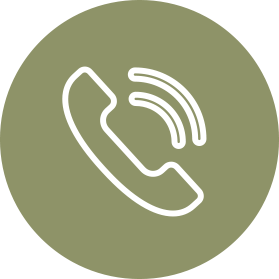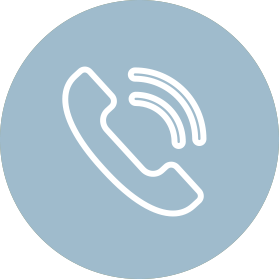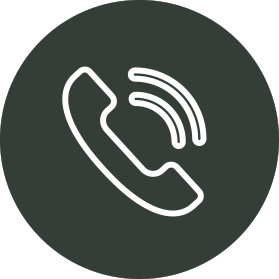What is Orthodontics and What Do Orthodontists Do?
There are some people who were born with perfect teeth. These people are lucky. There are many people who are not so lucky and they will need some type of orthodontic treatment to treat their problem, giving them the smile that they have always dreamed of.
What Is Orthodontics?
According to the American Association of Orthodontics, orthodontics is a dental specialty that diagnoses, treats, and prevents irregularities of the face and teeth. If a person is in need of orthodontic treatment, they cannot get it with your regular dentist. If the dentist recommends orthodontic treatment, they would refer the patient to an orthodontist specializes in this type of treatment.
What Is the Difference Between a Dentist and an Orthodontist?
Both dentists and orthodontists are required to take the same courses in dental school. They are required to graduate from school and work toward getting their license. If a person wants to be a family dentist, their education would end here and they can begin looking for work in a dentist office. If they want to become an orthodontist, they would need to continue their education for two to three more years in the field of orthodontics. An orthodontist focuses more on their patients’ jaw position and their appearance than they do with their patient’s oral health. In most cases, the orthodontist will make sure that their patients see their dentist for regular cleanings throughout the entire treatment process.
Types of Orthodontic Issues
There are several orthodontic issues that can make a person ashamed of the appearance of their smile. There are some issues that can be inherited from the parents such as jaw growth issues, congenitally missing teeth or extra teeth, spacing problems and protruding teeth. There are other issues that have nothing to do with genetics. These problems could have been caused by thumb sucking, accidents, dental diseases, the premature loss of baby teeth, or having baby teeth in the mouth for too long. Regardless of the cause of the problem, these issues would need to be treated using orthodontic treatments.
Why Should a Person Seek Orthodontic Treatment?
The major reason why people want to see an orthodontist to treat their dental issues is to improve their appearance. A person’s smile is one of the first things that people notice about them, therefore, they want it looking perfect. There are a few other reasons why a person should seek orthodontic treatment if you need it. First, for a serious malocclusion because it can make eating and speaking difficult. This condition can also wear away the enamel on the teeth and it can put excess strain on the muscle tissue and the jawbone. If the teeth are crowded or overlapping, it can be difficult to brush the teeth the way that they need. This can result in tooth decay and gum disease.
How Old Does a Child Need To Be To Start Orthodontic Treatments?
Children as young as 6 or 7 years old are able to receive orthodontic treatment. At this age, it is called interceptive orthodontics. When a child is this young, their jawbone is still developing, therefore, there are certain conditions that can be corrected easier than if the child is in their teens. If a child’s jaw or dental arches are not in the correct position, early orthodontics can help. The child may need more treatment in the future, however, it won’t be as invasive if the child starts at a young age.
Common Orthodontic Treatments and the Conditions That They Treat
When most people hear the term orthodontic treatment, the first thing that they think about is braces. Braces are a common treatment option, however, there are many other types of appliances that are used to move the teeth, affect the growth of the jaw, and to retrain the muscles. The type of appliance that the orthodontist would recommend depends on the condition and its severity. There are two types of appliances, fixed and removable.
Fixed Appliances
Fixed appliances are placed in the mouth and they remain in the mouth until the orthodontist removes them. There are a few common fixed appliances that an orthodontist will suggest.
• Braces: As mentioned above, braces are the most common fixed appliance in orthodontics. Braces are made up of brackets, wires, and bands. The bands are placed around the teeth and they are the anchors for the braces. The brackets are often bonded to the teeth which will hold the wire on over the teeth. During each visit to the orthodontist, the archwire would be tightened to put added tension on the teeth. This will gradually move the teeth to the desired position. This is often done monthly so that the treatment would be complete within one to three years. If the patient skips frequent visits, it can delay the treatment. The braces that orthodontists use today are lighter and smaller than they were in the past like invisalign. Also, they come in bright colors for children and clear styles that are popular with adults.
• Fixed Space Maintainers: If a child loses a tooth earlier than they should, an orthodontist might want to place a space maintainer. This will keep the spot open until the permanent tooth comes through. Since the tooth fell out prematurely, it will take time for the adult tooth to come through. Without a fixed space maintainer, all of the teeth can shift, resulting in serious problems that would require invasive care to repair later.
• Special Fixed Appliances: Special fixed appliances are given to children to keep them from sucking their thumbs or tongue thrusting. These are habits that can result in serious orthodontic problems later in life. These appliances can make eating very uncomfortable, therefore, they should only be used as a last resort.
Necessary Oral Care For Fixed Appliances
When a person has any type of fixed appliance in their mouth, they need to pay special attention to their oral health. Since there will be appliances affixed to the mouth. Without proper oral care, the teeth can be susceptible to decay. There are a few tips that should be followed.
• It is important to brush after each meal. This will remove any food and debris from around the appliance in in some cases, underneath.
• Use the necessary tools: When a person has braces or any type of fixed appliance, they will be given special tools to clean their teeth. The tool will be able to reach places that a toothbrush cannot reach.
• Floss: Regardless of the type of fixed appliance, the teeth should be flossed at least once a day.
• Use mouthwash: Mouthwash is very important as it can help remove food and debris from the teeth that the toothbrush and the tool could not reach on its own.
• Make all scheduled appointments: It is important to make all scheduled appointments with the dentist. Visits to the orthodontist won’t be enough. The dentist will check for signs of decay. When the teeth are cleaned, the dentist would give the patient any information necessary to change their habits so that decay will not be an issue.
Removable Appliances
Removable appliances are not placed permanently in the mouth. Since they can be removed from the mouth, the patient needs to be responsible enough to wear the appliances as directed. There are several types of removable appliances that have different purposes.
• Aligners: Aligners are an alternative to metal braces. The aligners are clear, therefore, they are very popular with adults who don’t want to wear metal braces. The aligners come in different sizes. As the treatment progresses, the patient would be told to put in a new aligner. The aligners are made of plastic, therefore, there are no wires and brackets to scrape up the inside of the mouth. When the patient brushes, flosses, and eats, they would remove the aligner. After, they would put the aligner back in. There are many people who find aligners to be much more comfortable and convenient than metal braces.
• Removable Space Maintainers: This removable appliance provides the same treatment as fixed space maintainers. The removable version is made of acrylic that fits over the jaw. Depending on the type, the branches between the teeth to keep the space open are made of either wire or plastic. These space maintainers can be removed regularly. Many parents find that their children are much more comfortable with this version.
• Jaw Repositioning Appliances: Jaw repositioning appliances are also known as splints. The split is placed in either the bottom jaw or top jaw, depending on the patient’s individual situation. This appliance is designed to train the jaw to close in the best position possible. This is a common treatment for people with TMJ.
• Cheek and Lip Bumpers: If a person has excess pressure on their lips or cheeks, this appliance can help. It can relieve the pressure, reducing the pressure and making the patient more comfortable.
• Palatal Expander: A palatal expander is a plastic plate that fits right into the roof of the mouth. It is designed to make the arch of the upper jaw, wider. There are screws on the appliance that would put pressure on the joints and bones, which will eventually lengthen or widen the palate.
• Removable Retainers: Just about every person who has braces or aligners to treat their orthodontic problems will need to wear a removable retainer after. The orthodontist will recommend how often the retainer should be worn. Some patients need to wear it all the time while others only need to wear the retainer at night. If the patient neglects to wear the retainer, their teeth can start shifting back to the position they were in before the patient started wearing braces. If the patient neglects to wear the retainer, over time, it will no longer fit in their mouth. This would require a new retainer to be made, which can be very costly.
• Headgear: Headgear is not the most attractive orthodontic appliance. It consists of a strap that is placed around the back of the head. Attached to the front is a metal wire. The headgear is designed to slow down the growth rate of the upper jaw. This is achieved when the device holds the back teeth in place while the front teeth are pulled back. Only certain orthodontic issues would require a patient to wear headgear.
Necessary Oral Care For Removable Appliances
Since removable appliances can be removed before brushing and flossing, there would be no special tools necessary. The patient would remove their appliance and brush and floss like they always have. When the teeth are clean, the appliance would be put back in place.
When a person is born with a less than perfect smile, they do have options. An orthodontist can create a treatment plan to improve the appearance of the smile as quickly as possible. Within one to three years, they can have the perfect smile that wish that they always had. The dentist and the orthodontist will work in conjunction to be sure that the teeth are straightened and the teeth are healthy and free of decay.
 DOWNTOWN
DOWNTOWN SEAPORT
SEAPORT GOVERNMENT
GOVERNMENT

